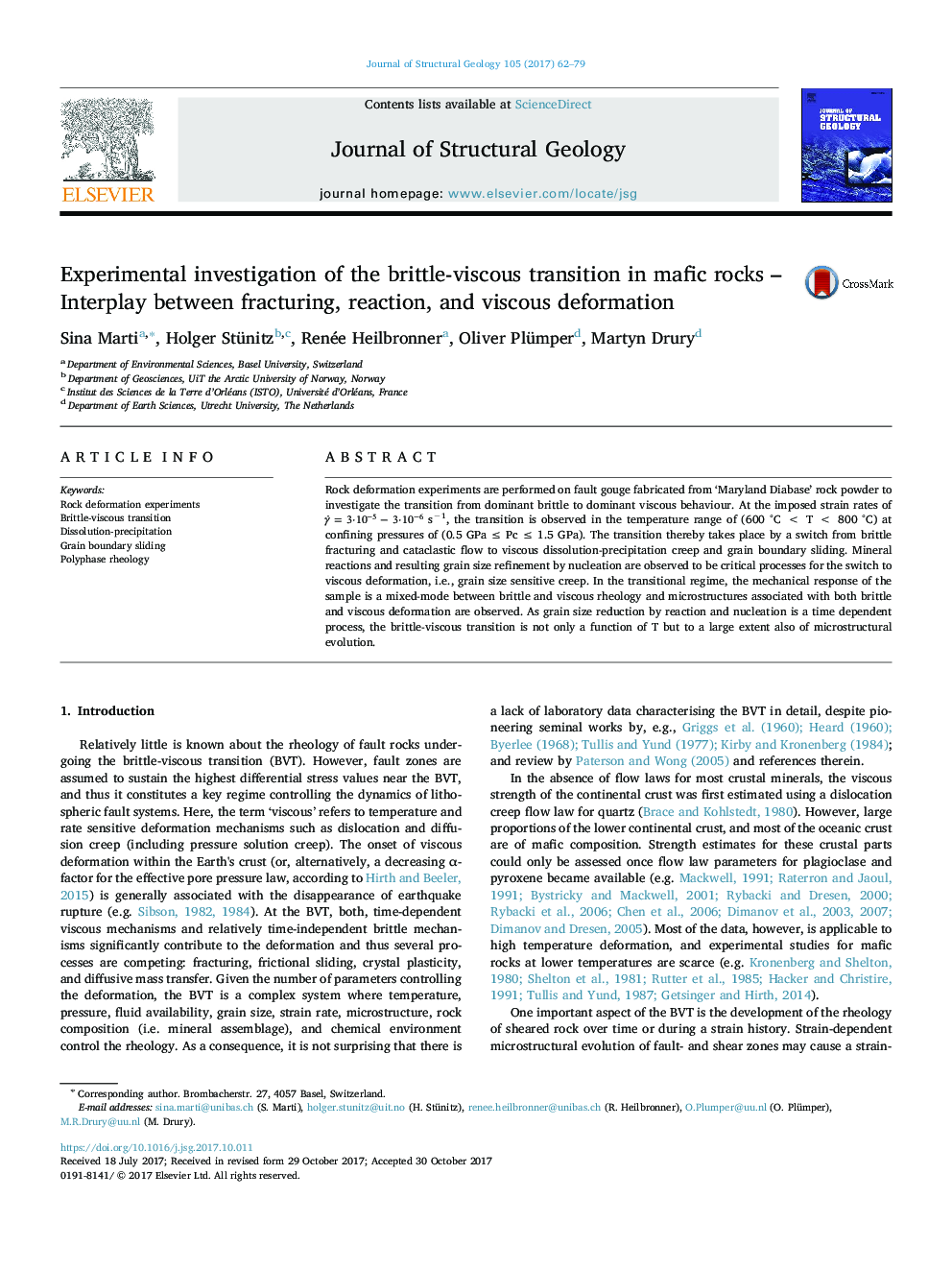| Article ID | Journal | Published Year | Pages | File Type |
|---|---|---|---|---|
| 8914545 | Journal of Structural Geology | 2017 | 18 Pages |
Abstract
Rock deformation experiments are performed on fault gouge fabricated from 'Maryland Diabase' rock powder to investigate the transition from dominant brittle to dominant viscous behaviour. At the imposed strain rates of γË=3·10â5â3·10â6 sâ1, the transition is observed in the temperature range of (600 °C < T < 800 °C) at confining pressures of (0.5 GPa â¤Â Pc â¤Â 1.5 GPa). The transition thereby takes place by a switch from brittle fracturing and cataclastic flow to viscous dissolution-precipitation creep and grain boundary sliding. Mineral reactions and resulting grain size refinement by nucleation are observed to be critical processes for the switch to viscous deformation, i.e., grain size sensitive creep. In the transitional regime, the mechanical response of the sample is a mixed-mode between brittle and viscous rheology and microstructures associated with both brittle and viscous deformation are observed. As grain size reduction by reaction and nucleation is a time dependent process, the brittle-viscous transition is not only a function of T but to a large extent also of microstructural evolution.
Related Topics
Physical Sciences and Engineering
Earth and Planetary Sciences
Geology
Authors
Sina Marti, Holger Stünitz, Renée Heilbronner, Oliver Plümper, Martyn Drury,
